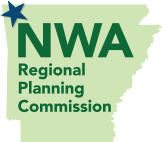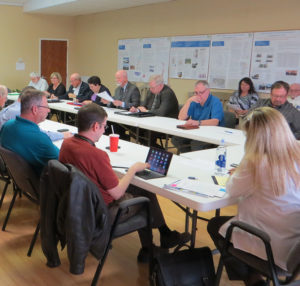Northwest Arkansas Regional Planning Commission
Metropolitan Planning Organization (MPO)
A basic planning activity of NWARPC is its function as a Metropolitan Planning Organization (MPO) while managing functions for a Transportation Management Area (TMA). Each governmental unit and transportation agency in Benton and Washington counties can participate in transportation planning. For description of transportation programs as well as a list of terms, abbreviations and acronyms used in published documentation see this Glossary and Terms document.
Federal legislation calls for a “3C’s Approach” – Cooperative, Continuing, and Comprehensive – to transportation planning.
Cooperative – Cooperation between federal, state and local levels of government and various agencies within each level.
Continuing – Need to periodically reevaluate and update transportation plans.
Comprehensive – Refers to 10 basic elements for which inventories and analyses were required.
The MPO includes a Technical Advisory Committee (TAC) and the Regional Planning Commission (RPC)/Policy Committee. The TAC develops the technical aspects of plans and reports and makes recommendations to the RPC/Policy Committee. The RPC/Policy Committee members make the MPO’s final decisions.
The TAC and RPC/Policy Committee make up the Northwest Arkansas Regional Transportation Study (NARTS). Three documents are the principal NARTS products.
-
- The Unified Planning Work Program (UPWP) is produced each year and outlines annual work activities;
- The Transportation Improvement Program (TIP) is produced every three years and contains all commitments for state and federal transportation funding for a four year period in the Metro area; and
- The Metropolitan Transportation Plan (MPT), which is updated every five years and provides a long range, comprehensive look at the region’s transportation needs and implementation strategies while considering financial constraints.
In 2005 NWARPC developed the Northwest Arkansas Travel Demand Model and it continues to improve the data input and functionality. The Travel Demand Model is continuously utilized in a variety of projects for short and long term transportation projects within the metropolitan planning area.

